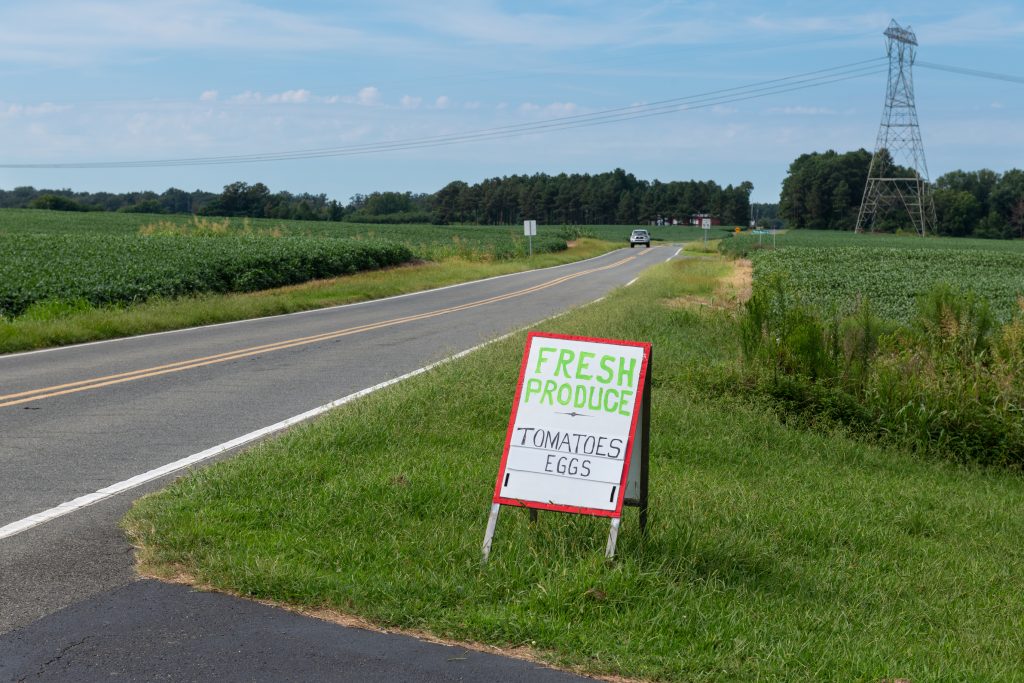You’ve been dreaming of owning your own homestead for most of your life. Now that you’ve got it, it’s important that you can afford to maintain your lifestyle.
The problem is that you may have quit your job to focus entirely on homesteading. Or your new property may be too far from the city and commuting to a job is no longer a viable option.
That means you’ll need to earn enough money to cover your mortgage, property tax, utilities and day-to-day expenses entirely from your homestead.
Thankfully, there are all sorts of ways that you can make money while homesteading.
We’re going to show you 48 of our favorite ways in this post.
But first, let’s address what homesteading is and whether it’s profitable.
What Is Homesteading?
Homesteading is a lifestyle of living off the land and being as self-sufficient as possible.
Homesteaders produce the vast majority of their own food. They might even make their own clothing and textiles, brew their own wine or beer and produce most of the products that they need.
It’s about getting back in touch with the land and returning to more of a subsistence lifestyle.
It can be incredibly rewarding and fulfilling to support yourself almost entirely, but it can also be very hard work.
Can Homesteading Be Profitable?
Homesteading can be profitable if you find the right mix of short-term and long-term projects to ensure a steady inflow of cash for your homestead.
Earning money from your homestead is just like running any other kind of business. At the end of the day, its success or failure depends on the decisions you make and the work that you put into it.
Not all homesteading activities will produce an income in their first year. For example, if you’re planting an apple orchard, it will take at least 5 years before your seedlings start to bear fruit.
We feel that a diversified homestead is the one that has the greatest chance of long-term success.
An activity that earns you $1,000 – $2,000 per year doesn’t seem like much. But when you have multiple small ventures on your farm that are each bringing in a few thousand dollars, it starts to add up.
With proper planning and strategies, even a small homestead can be quite profitable.

Why Do Homesteaders Need To Earn Money?
If you’ve just bought your land, then most likely you have mortgage payments that you need to make.
Almost all countries will also charge property tax on the land that you own.
If you’ve bought equipment like tractors for your homestead, you most likely have a loan that you need to pay off as well.
Plus, there are some things that you’ll want or need on your homestead that you can’t produce. You’ll want some money to go into town and buy those things once and a while.
One of the fantastic things about the homesteading lifestyle is that it doesn’t necessarily require a lot of money. Once you’ve got your land, you can produce a lot of what you need on your own.
As a homesteader, you can grow the vast majority of the produce and meat that you eat. You can preserve vegetables with canning or store them in a root cellar to last all winter long.
Lots of homesteads are at least partially off-grid and don’t need to pay for all of the utilities that someone living in the city would. You can get your own well water, heat your home with a wood stove and get electricity from solar or wind power to be fully self-sufficient.
However, there will still be a minimum amount of money that you need to get by in the modern world. Even as a homesteader.
How Can I Make Money off My Land?
The good news is that there’s a huge number of potential ways to make money off your land as a homesteader.
Not all of them will make sense for a particular piece of land, but chances are that even on a small homestead, there are at least a few dozen sources of income that you could consider.
Below are some of our favorite ways that you can make money homesteading.
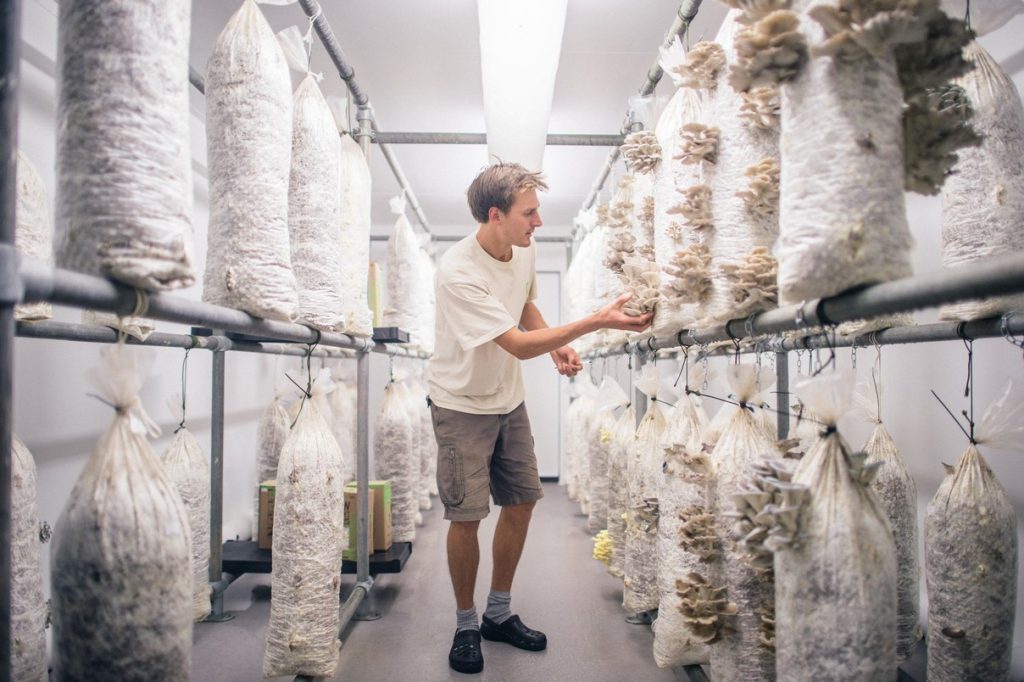
1. Grow Mushrooms
Growing mushrooms is obviously one of our favorite choices here at GroCycle.
Mushrooms are high yielding and there are multiple ways that you can grow them.
If you want a more intensive mushroom farm that generates most of your income, it makes sense to grow oyster mushrooms indoors in grow bags. Even a garage, shed or small barn can potentially be turned into a mushroom grow room.
Those who want a more natural and low-maintenance approach can grow shiitake mushrooms outdoors on logs. Inoculated logs can produce mushrooms for years with minimal inputs.
Oyster mushrooms currently sell for about $6 dollars per pound. In a growing area of just a few hundred square feet, you can easily produce thousands of pounds of mushrooms per year.
See our resource How To Grow Mushrooms On Logs: The Ultimate Guide to learn more.
2. Sell Fresh Fish
When you think of things that grow on a farm, fish probably isn’t one of the first things that comes to mind.
The truth is that raising fresh fish can earn you a nice sum of money each year.
If you’ve got a pond on your land, that’s really all you need to get started. You can start raising tilapia, rainbow trout and other varieties of fish.
Fish also make a great addition to an aquaponic system. That’s where you combine hydroponics (growing plants in water) with animal waste to minimize the need for chemical fertilizers and other additives. The fish produce poop which provides nitrogen and other nutrients for the plants.
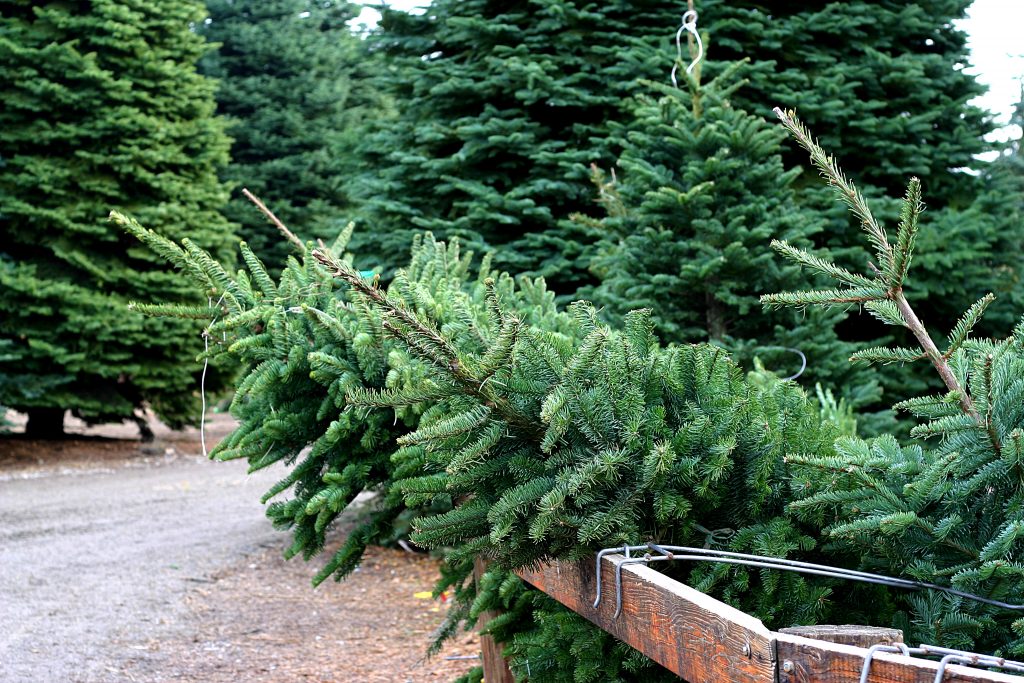
3. Start a Christmas Tree Farm
If you’ve got land that already has lots of fir, pine or spruce trees, you can turn them into some easy revenue during the holiday season.
You can also start planting some trees today for a nice payout in 10 years or so. In the meantime, those trees will provide shelter from the wind, plus a habitat for birds and other beneficial wildlife.
Growing trees is quite low-maintenance. You don’t need to water or weed them as often as other crops. They can be a great way to make use of some extra space on your land.
If you operate a Christmas tree farm where people can choose and cut down their own tree, your customers will gladly do most of the harvesting labor for you. Plus it’s an opportunity to sell some cookies and cups of hot cocoa to round off the whole experience for them and make a greater profit.
4. Grow Microgreens
Even if you live in a climate where it gets snowy with temperatures well below freezing in the winter, that doesn’t mean that you have to stop growing completely.
Microgreens are some of the most space-efficient crops that you can grow. A basement, spare bedroom or heated garage can be converted into a microgreens operation that can produce thousands of dollars for you over the colder months.
Sell microgreens at farmer’s markets or directly to restaurants or grocery stores. It might end up being so profitable that you’ll want to do it all year round!
Microgreens are one of the most profitable crops you can grow. See our article Top 13 Most Profitable Crops To Grow for others.
5. Sell Baked Goods
If you love baking, you might want to start regularly offering products at your local farmer’s market.
Pies, fresh bread, cupcakes and other baked goods all sell well.
The important thing is to look at your input costs to determine how much you’ll need to charge for your products to earn a profit. People are normally willing to pay a bit more for fresh baked goods made with local ingredients.
You might also consider selling your own fresh-pressed apple juice, cider or lemonade alongside it.
A busy weekend at the farmer’s market can help to bring in an extra $500 per week for your homestead.
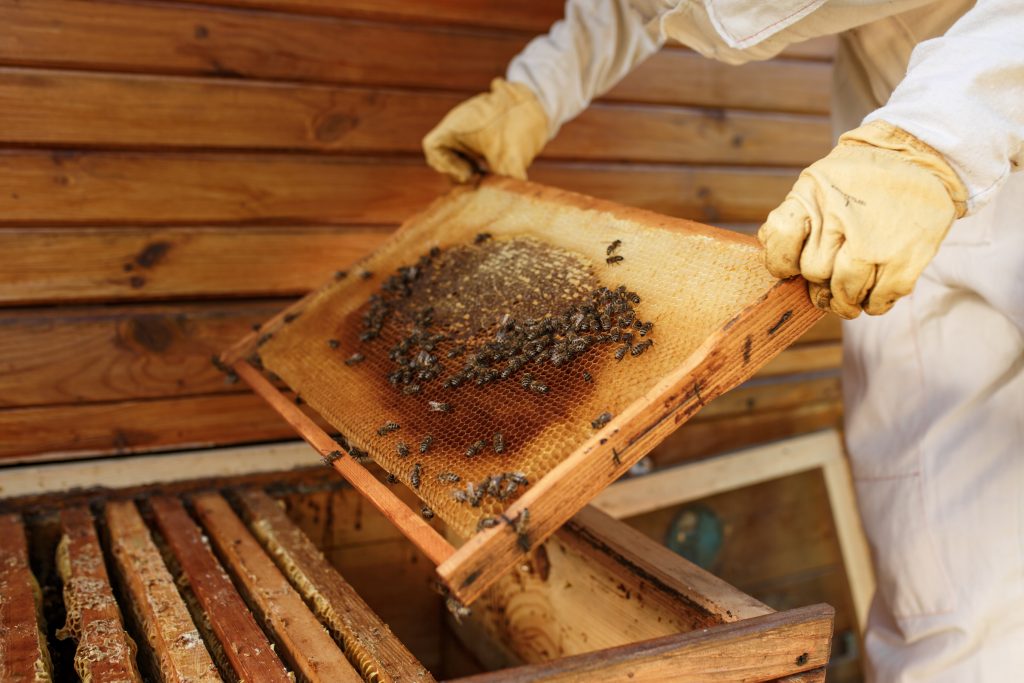
6. Raise Bees for Honey
Once you’ve established a healthy beehive, they’ll gather pollen and nectar from flowers and do their own thing for most of the year without much input. They just need a bit of help to make sure that they survive over the winter.
Beehives produce honey which you can use in your own home as a sweetener and then you can sell any excess that you get.
When you harvest the honey, you’ll also get lots of beeswax, which can be used to make candles and soaps.
7. Rent Bees Out for Pollination
Bees can be profitable to keep, even before taking the honey into consideration.
Many farms will rent out bees for the growing season to help pollinate their crops. Fruits and vegetables pollinated by bees can have a 30 percent or higher value than those pollinated by wind or self-pollination.
All you need to do is transport your hives to their new location for a few months and check on them periodically to make sure that they’re happy and healthy. At the end you can bring the hives back to your homestead and keep any honey that your bees have produced over the season.
8. Sell Extra Bees
As a successful beekeeper, you may find that your hives are producing more bees than you know what to do with.
If a beehive gets too full, workers will start to raise a new queen. Eventually the hive will swarm and some of the bees will leave to start a new colony. To prevent this, beehives need to be split at least once per year.
You can use this to expand your number of beehives. But past a certain point, it might not be practical to have any more bees on your homestead.
If you’ve got eight beehives of your own and you split them off once per year, that’s eight beehives worth of new bees that you can sell off each year.
People will pay $100 for one nuc (a small starter bee colony) or $200+ for a fully-established hive. So it doesn’t take much to be earning $1,000 per year from bees alone, even before considering the honey and other products.

9. Sell Cheese, Butter, and Other Dairy Products
If you have dairy cows or goats, you could start a microdairy and sell your milk as-is. But why not put in a little extra work to create value-added products out of it?
There’s butter, yogurt, sour cream, ice cream, cottage cheese and other products that can all be made from your own cow’s or goat’s milk.
Becoming a cheesemaker could become the main source of income for your homestead if you’re good at it and do it on a large enough scale.
10. Sell Leftover Seeds From Last Year
Most homesteaders will already be saving seeds from year to year. However most also have more seeds than they’ll be able to use. Selling your extra seeds can be a good source of extra income.
Heirloom and non-GMO seeds are particularly in demand.
11. Breed Dogs
Most homesteaders are animal lovers. Help spread that love to others by breeding dogs for them to take home!
You can choose to breed whichever type of dog appeals most to you. You might want to focus on working dogs like border collies for herding sheep. You might breed and train dogs for hunting. Or you may focus on smaller breeds that people will want as pets in the city.
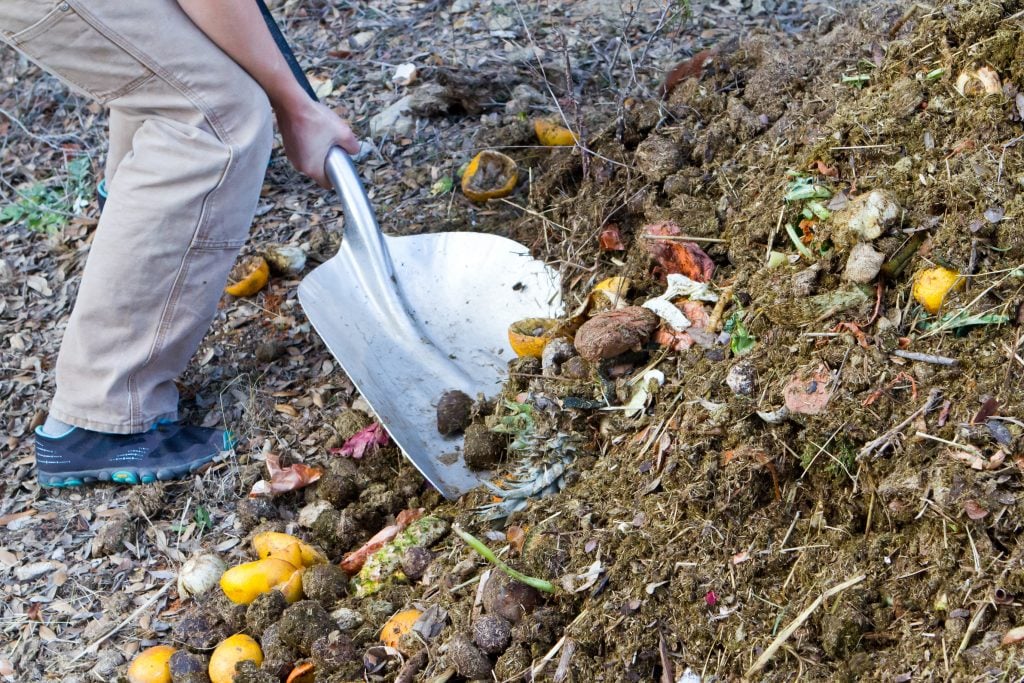
12. DIY Compost
Just like with seeds, your homestead might be producing more compost than you can practically use. In that case you can sell it to people for some extra cash.
When you’re thinking of how to make money homesteading, don’t just think of things that go in the dirt. You can also sell the dirt itself!
13. Sell Handmade Furniture
If you’ve got any skills as a carpenter, then making furniture can be a good way to make money on your homestead. Particularly if you’ve got your own wood on your land that you can use.
Buying all of the tools and equipment makes this a more expensive option. If you’re already into woodworking, you’ll probably own most of the supplies that you need though.
14. Make Your Own Candles
Candles that are handmade have a totally different feel to them compared to mass-produced ones that you can buy in stores. People appreciate the extra love and effort that goes into it.
If you have trouble selling candles and other crafts locally, you can make an account on Etsy to sell to customers all around the world.
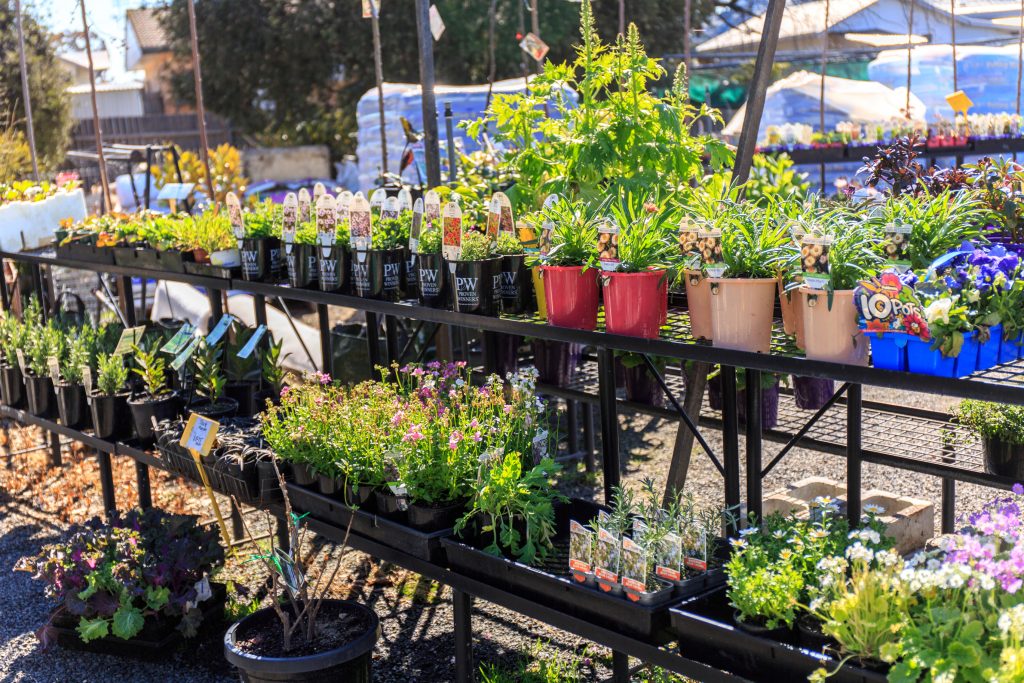
15. Start a Plant Nursery
When you’re starting your seedlings for the spring, be sure to plant a few extras that you can sell.
If you want to make it into a larger business, just devote more resources and grow more starter plants to sell. Woody ornamentals are popular and a great way to earn some extra money.
Are you just getting started with your homestead? Read our article How To Start a Homestead: Step By Step Beginners Guide.
16. Sell Your Excess Dairy
Some places will allow you to sell unpasteurized milk, while others don’t. So it may or may not be possible for you to sell your own cow or goat milk.
If you have to pasteurize your milk before selling it, it’s probably not worth buying the extra equipment needed unless you’re producing a lot of milk.
However if you live somewhere that allows you to sell raw dairy, there’s usually a big demand for it.
17. Make and Repair Clothing
Sewing your own clothing to sell or repairing clothes for people can both be good ways to make some extra cash on your homestead. Particularly in the winter when there’s not much that you can do outdoors.
18. Raise Cattle
If you’ve got lots of land, raising some cows is an option worth considering. Cattle are harder to raise than smaller animals like rabbits and chickens. However selling beef also tends to be more profitable than selling most other kinds of livestock.
19. Collect Maple Syrup
If you’ve got mature maple trees on your property, then you may be missing out on some potential money if you aren’t tapping them for syrup.
Maple syrup season coincides with times of the year that you won’t be doing much with other crops, so it’s a good way to make some extra money in the offseason.
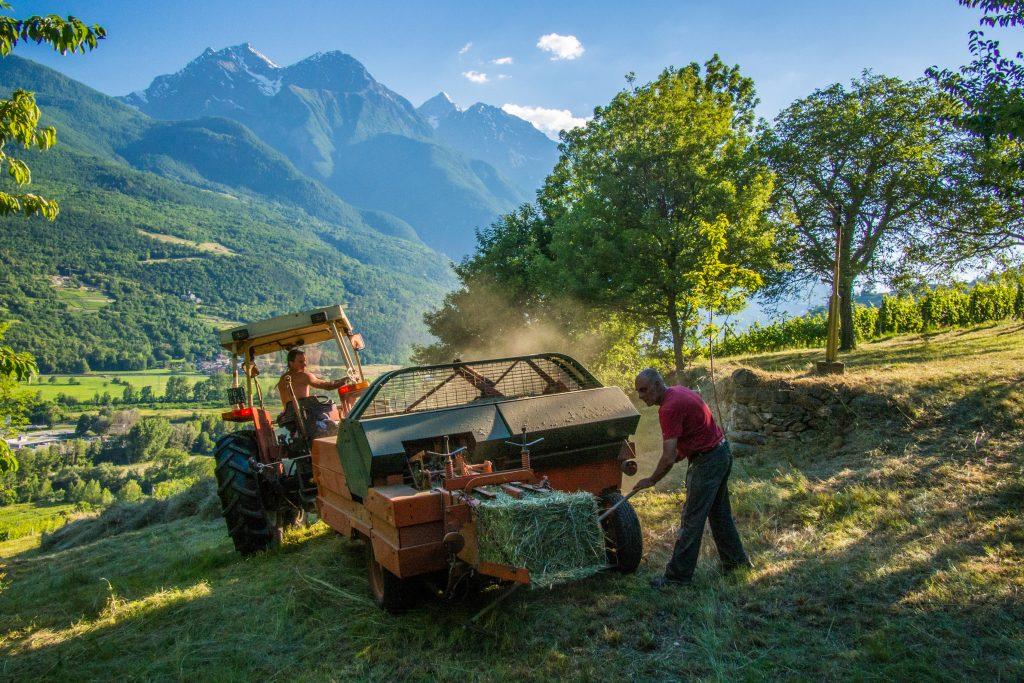
20. Sell Straw or Hay
Straw and hay have lots of uses. Other farmers need it as feed and bedding for their animals. Gardeners may use it as a mulch. Mushroom farmers use it to grow mushrooms. Small hay bales can even be sold as decorations for the fall season.
Chances are that if you grow it, there will be demand for it.
When you’re just getting started and looking for how to make money homesteading, you don’t even necessarily need the equipment to harvest straw or hay yourself. People will pay to come collect your hay and take it away for you.
21. Host Weddings and Other Events
If you’ve got a beautiful property with a landscape that makes for great pictures or gatherings, why not offer to let people use it for photoshoots and events?
Invest in a large wedding tent, or refurbish a barn into a space to hold events and you can easily earn $1,000 or more for a single day.
22. Board Animals for People
Some people might want to own a horse, but don’t have anywhere to board it. You can board a horse in an extra stall for a minimum of $100 per month.
If other farmers are going away for a while, they might need someone to look after and feed their other animals while they’re gone too.
23. Raise Heritage Poultry
Chicken is usually the first thing that comes to mind when you hear poultry. But there are others that you can raise too.
Eating ducks, geese, and guinea fowl fell out of favor for a long time. Now demand for these birds is on the rise again. People want to eat both their meat and eggs.
Keep in mind that you’ll need some water on your property if you want to keep ducks or geese.

24. Start a Blog or Youtube Channel
Starting a homestead of their own is a dream for lots of people. However they might not be in a position in life where they can do it themselves yet.
That’s where you come in! You can let people live vicariously through your blog posts or videos.
Document what an average day on your homestead is like.
People want to see what works. Just as importantly, they want to see what the hardships and struggles of a homesteader’s life are.
Your blog or Youtube channel can earn money from just advertising revenue. Or you may want to accept Patreon donations, or start your own line of products that your fans can buy.
25. Sell Hatching Eggs
Selling unfertilized eggs for people to cook with can be hard. Eggs are already so plentiful and cheap at the grocery store. Although your eggs might be superior in flavor and quality, it’s hard to justify the price when you take the cost of feed and everything else into account.
Hatching eggs is a different story though. You can charge a higher price for them. Particularly if you’ve got a rare or in-demand breed.
You can sell chicks or pullets (young hens under a year old) for even more money. Although it’s more work and costs more to raise them.
26. Start a Kennel
When people go on vacation for a day or more, they’ll need someone to watch their pet.
If you’re just watching one or two pets at a time, you may be able to pet sit in your own home.
However if you want to watch people’s pets on a larger scale, you’ll want to build a kennel to board several dogs at once.
People will pay good money to make sure that their pets are well cared for and tended to while they’re gone.
27. Sell Flowers
Flowers are nice to look at, plus they attract lots of bees and other pollinators. But why not cut them while they’re at their prime and sell them for some extra income as well?
In larger amounts you can sell flowers directly to flower shops. Or you can advertise on social media or sell them at your local farmer’s market.
It might be worth setting aside a few extra garden beds just for flowers.
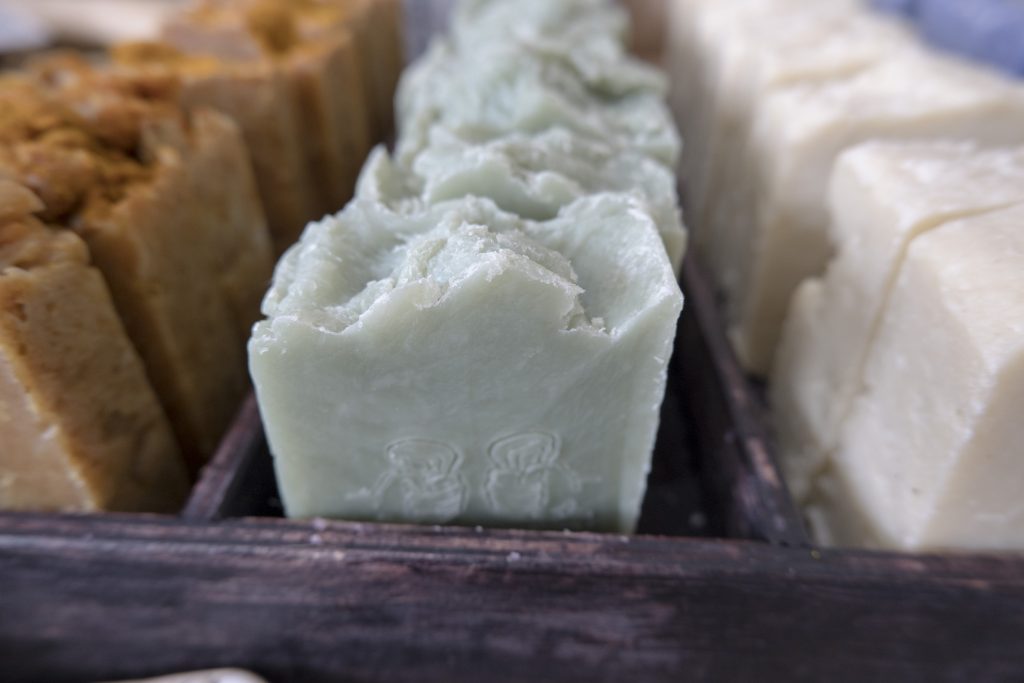
28. Sell Homemade Soaps
Soapmaking takes some work to learn and master. But once you’ve got the skill down, you can reliably produce beautiful handmade soaps for people.
The materials needed to make soap are fairly cheap, and you can sell handmade soap for $5 or more per bar. If you make soap in big batches, it won’t take very much of your time either. You can churn out a few hundred bars of soap in one afternoon and have enough to sell for a while.
29. Rent Out Your Land
If you’re just getting started on a homestead, you might not be in a position to use all of your land right away.
That doesn’t mean you can’t still make money from it though. Other nearby farmers will rent out land from you. Either to graze their animals on, or to grow their own crops or hay.
They’ll provide all of the equipment and do all of the harvesting. All you need to do is let them use your land.
30. Start a Campground
If you’ve got hundreds of acres on your homestead, you can easily create a small campground in a wooded corner of your property. It will be far enough from your house that you likely won’t even see or hear it. It’s like having an AirBnB without the cost of owning and cleaning a house after each guest.
If you’re an experienced homesteader, your knowledge is valuable to those who are just getting started.
People will gladly pay to come to your farm to learn about how you operate.
You might be really good at growing tomatoes, or a pro at raising chickens. Whatever your expertise is, you’ve got something people will pay to learn.
Even people with no intention of starting their own homestead or farm will come just for a tour.
Other people are trying to figure out how to make money homesteading too. Help them to figure it out!
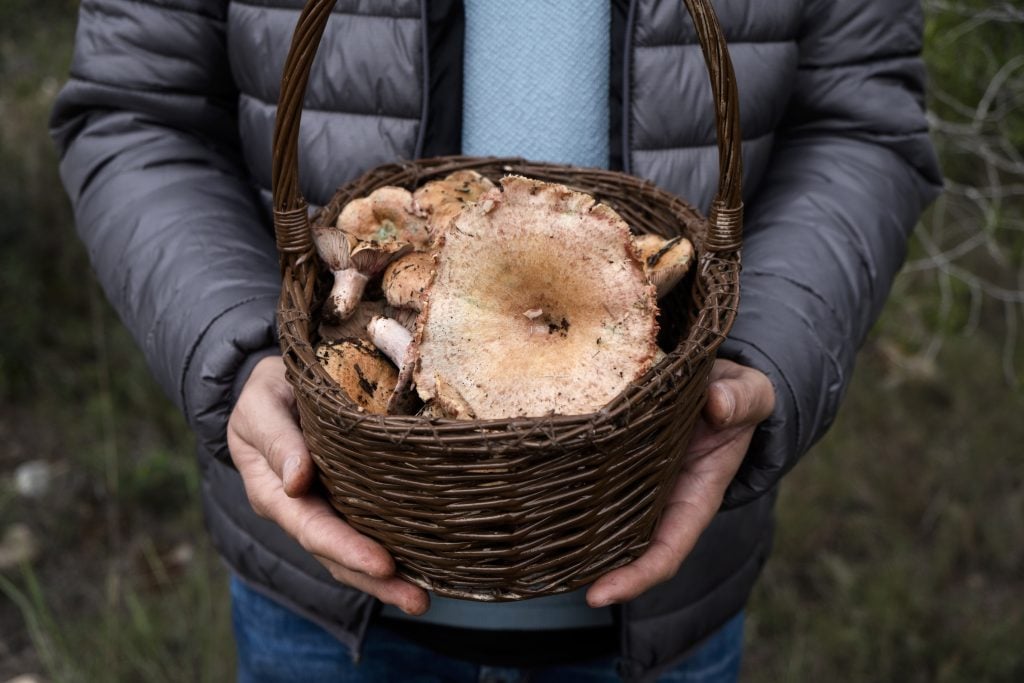
32. Sell Foraged Goods
Lots of plants and other items that are in-demand are difficult to commercially grow. Depending on where you live, you might be able to forage for some of these.
Wild mushrooms like morels and chanterelles are highly prized. If you’re really lucky, you might even have truffles growing on your land.
Some wild plants like fiddleheads and ramps are edible. Other plants are sought for their medicinal benefits.
Young willow branches can be harvested for basket-weaving and other crafts.
You might underestimate how many valuable resources are on your property until you really go out and look! Even things like pinecones and be collected and sold for crafts.
33. Tan and Sell Hides
It doesn’t matter if you’re raising sheep, rabbits, goats or cows. If you’re butchering your own animals, then you’ve got a lot of hide that you’d otherwise probably throw away. So why not put every part of the animal to use?
You can use your hide to make gloves, belts, purses, footballs and all kinds of goods.
34. Raise Sheep for Meat or Wool
Mutton in the grocery store normally comes at a premium to other meats like beef or pork.
Raising sheep is more difficult than smaller animals like chickens, but it’s also a lot more profitable.
Keeping sheep for wool is another option.
35. Offer Storage Solutions
People need a place to store boats, RV’s, motorcycles and expensive cars for the winter.
If you’ve got some extra space in your barn, it can be a passive way to earn a bit of extra money. You’ll only deal with each person once when they drop their vehicle off, and again when it’s time to come pick it up.

36. Make Jams and Jellies
Does your homestead have more fruit than you know what to do with?
You might be eating all of the apples or pears that you can, and trying to sell the remainder. But you can still end up with extra fruit.
Jams and jellies are a great way to prevent all of that extra fruit from going to waste.
It’s also a good way to use up fruit that might be blemished and not possible to sell directly. You can cut any bruises or markings off damaged fruit and make the good portions into jam. Even overly-ripe fruit that has fallen off the plant can be gathered up for jam-making.
You can sell jams at a farmer’s market, or a small locally-owned grocery store might even stock it as long as you can produce enough.
A cow share is where someone pays you upfront for the season to get a part of the cow. Someone might want to buy half a cow or a quarter cow all at once to load up their freezer.
However they might not want a full cow, or to raise the animal themselves.
That’s where you come in. You can get a few people to buy a share of each cow that you raise. Then when it’s time for slaughter, you’ll know that all of the meat is already sold.
You can do the same thing with pigs or other large livestock too.
Having a cow share is also a way to get around laws regarding purchase of raw milk in some places. If someone owns shares of a cow, they own a share of that animal including any of the milk that it produces. So it’s technically legal since they aren’t buying the milk directly.
38. Create a Corn Maze
If you’re growing a field of corn anyway, then around harvest time you can set up a corn maze for a few weeks. You can harvest some of the corn to clear paths of the maze, and leave the rest standing for a while.
People will pay to come check it out and have a walk through your maze. Especially if you have other things like tractor rides to offer as well. Try to make a whole harvest festival out of it!
This is also a great way to market any other crops you may have for sale, and pumpkin farmers often use corn mazes to help sell their Halloween pumpkins.
39. Grow Medicinal Herbs
Most farms and gardens focus on edible plants and culinary herbs. There’s lots of demand for medicinal herbs as well.
Plants like echinacea, bee balm and valerian are used to make herbal teas and salves for various purported medicinal benefits.
These herbs sell at a high price. Plus they’re easy to grow. Most herbs tend to spread and keep taking up more space over time. Plus insects and other pests tend to not bother these plants as much as vegetables.
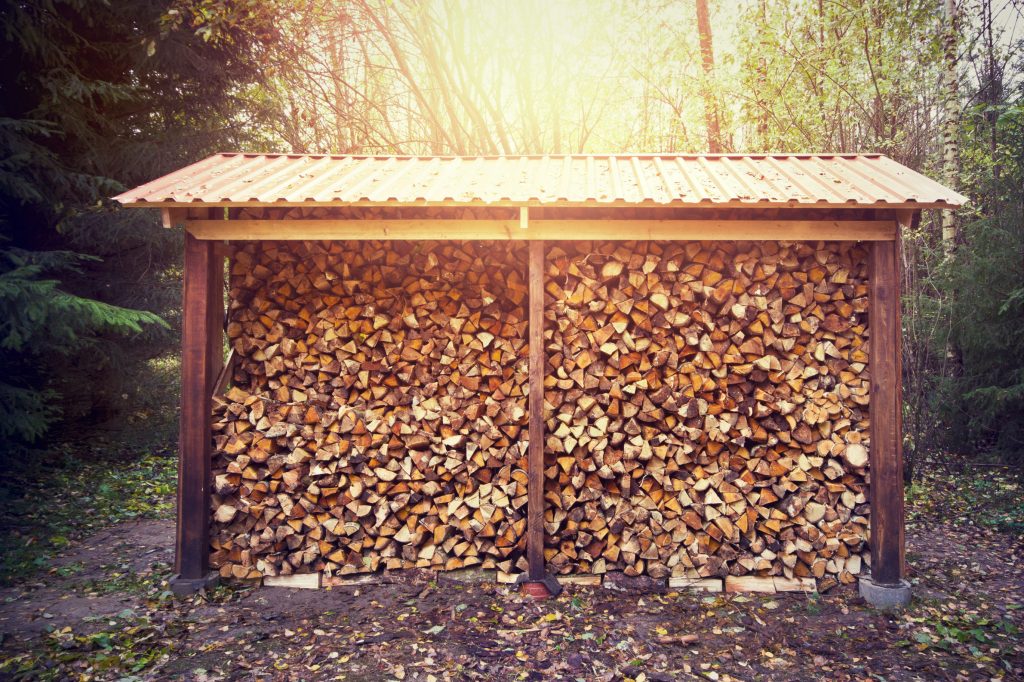
40. Sell Firewood
You might have some land that you want to clear to plant crops on. Or you may just be managing an existing forest on your land.
Either way, any trees that you cut down can be made into firewood to help people to heat their homes for the winter.
Individuals with fireplaces will buy large piles of firewood at once. During the summer, you can create smaller bundles of firewood to sell to campers who drive by your homestead.
41. Sell Your Manure
Whether you’re raising rabbits, horses or chickens, chances are that you’ve got a surplus of animal poop laying around.
Horse and chicken manure needs to be composted before people can use it in their gardens. But rabbit manure has a specific benefit that it doesn’t need to be broken down in this way before it can be used in gardens. Plus it’s very high in nitrogen and phosphorus that plants need to grow big and healthy.
In most places you can sell manure for $5 per pound or more. Not bad considering it’s a literal waste product!
If you’re producing large amounts of manure, you might try approaching your local garden center to see if they’re open to buying it in bulk. That way you can unload truckloads of the stuff at a time.
42. Set up a Produce Stand
Selling your products at a farmer’s market can produce lots of income for you. But if your homestead is far from town, it might not be worth the time to drive there and back. Plus, there are all of the hours that you’ll need to stand there to make sales.
If your homestead is on a highway or road that gets a fair amount of traffic, you can set up a produce stand at the edge of your property. It can be left completely unattended. Just leave produce out for people to take, and a lockbox bolted down where they can insert money.
Most people are honest and will pay for what they take.
43. Create an Orchard
Fruit trees are a long-term way of making money on your homestead. However they’ll continue to produce money year after year without much work on your part.
You can choose to harvest your fruit yourself, or you can set up a “you pick” operation where people come and pick their own fruit and pay by the basket.

44. Start a Bed and Breakfast
If you’ve got the space, you can rent out a room or two to guests who want to spend the night. They can experience a few days of country living, you get some fresh faces to talk to and you get some extra income from it as well.
A B&B can be a great option if your kids have left home and your house feels a little too quiet and empty.
45. Dehydrate Your Goods
Canning is a popular way of preserving foods, but many people overlook dehydrating as another option.
You can dry out apricots, prunes and other fruits. These make great portable snacks for taking hiking, plus they store for a long time.
Sun-dried tomatoes are also quite an artisanal product that’s in demand.
Even meat can be dehydrated to make jerky and other dried products. Bacon and sausages can also be smoked and hung.
46. Raise Worms for Bait
If you live near a lake or a popular fishing spot, you can sell worms to people who drive by as bait. Gardeners also love to add worms to their garden or compost bins.
It takes very little effort to raise worms. All you need to get started is a worm bin and some old newspaper and kitchen scraps.
There are lots of other insect farming options too! See our article Insect Farming Ultimate Guide and Examples for more detail.
47. Start a Market Garden
Another relatively simple way to get started with making an extra income is to start a market garden. While this can turn into a large (or even full time) operation, you can also make it a side project to some of your other money making endeavors. If you’re just starting out, we recommend beginning with one high-yield, high-profit plant to see if you enjoy the process. For more on starting a market garden, check out our article: Starting a Market Garden.
48. Grow Microgreens
Microgreens are one of the smartest plants you can grow, because they have a low startup cost but often earn a high price. You don’t need a large area in which to grow microgreens. In fact, we recommend starting small. But if it becomes a full-time operation, some people convert their basements or other spare rooms into microgreens growing rooms. To learn more, check out out guide on how to grow microgreens.
Final Thoughts
Making money on your homestead is very possible! You just might have to get a bit creative when it comes to figuring out what to produce and sell.
Focus on whatever most interests you. If you enjoy farming or gardening, focus on growing crops. If you enjoy looking after livestock, find something related to that.
Not everything that makes money on the homestead has to be done outside. You can set up a small business doing sewing repairs, making furniture or selling baked goods too.
Being a homesteader gets labeled as one thing. But there are really a million different ways to do it. It feels more like running several small businesses at a time. The great thing is that you can design the life that you want, and make money doing it.
